A in-depth guide of 5 essential woodworking saws that can be great to have in your workshop!
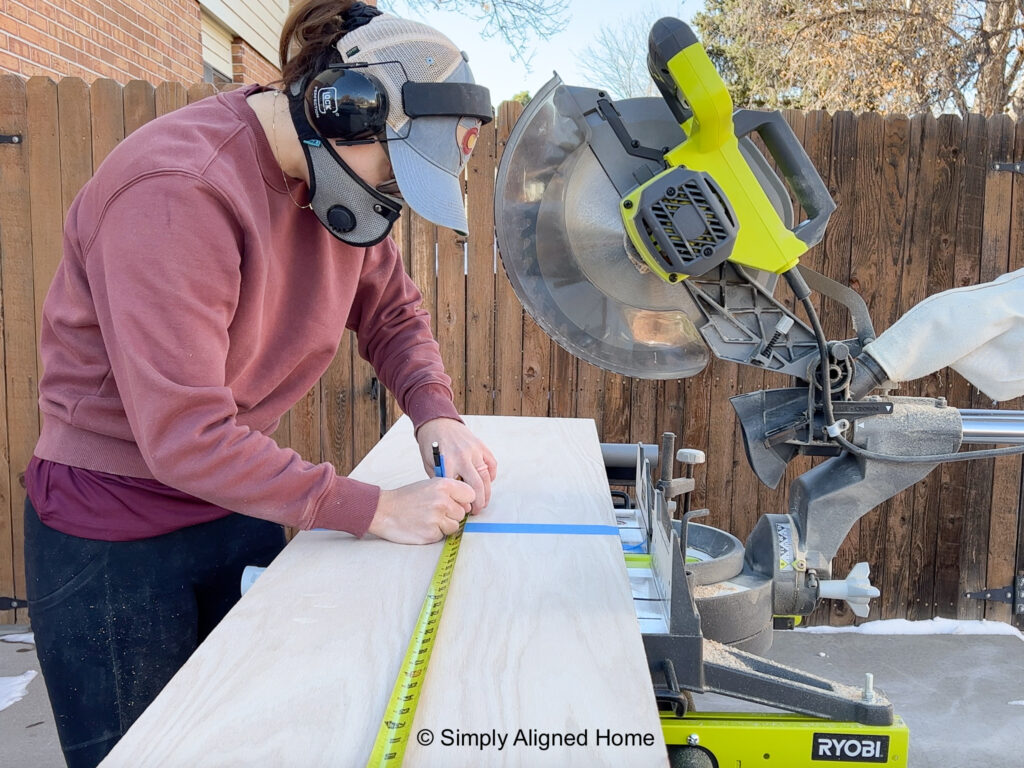
When diving into the world of woodworking it can be confusing as to which saw is used for what. Do you need them all? Probably not. That’s why I’ve made this comprehensive guide to share what each saw is and the pros and cons of each one!
**This post contains affiliate links to products that I used or recommend. If you purchase something through an affiliate link, I may receive a small percentage of the sale at no extra cost to you. I really appreciate your support!**
The Ultimate Guide To The Most Common Power Saws
The most common types of power saws are: miter saw, jigsaw, circular saw, table saw and bandsaw. Let’s take a more in depth look of each saw!
1. Miter Saw
A miter saw is a specialized power tool designed for making precise and accurate angled cuts in various materials. It consists of a circular saw blade mounted on a swing arm that can be pivoted left or right to create miter cuts at different angles. The saw blade can also be lowered onto the material to make straight crosscuts.
Their versatility and ability to make quick, accurate cuts make them a valuable tool.
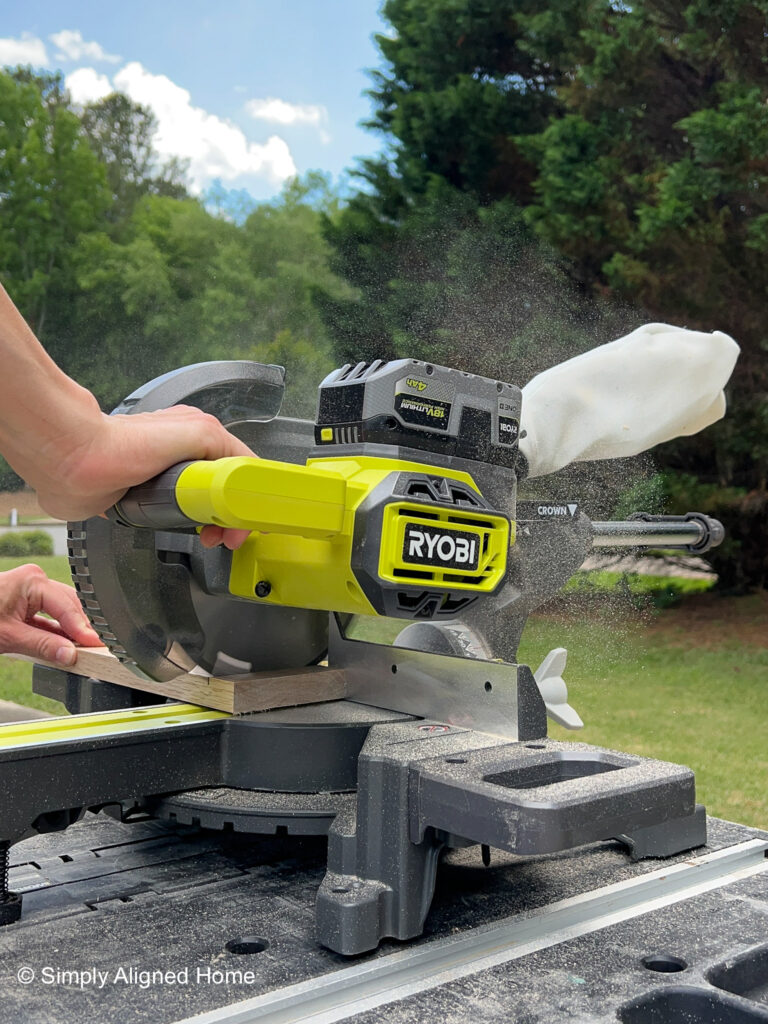
Pros
- The miter saw has a lot of versatility. They can make a variety of cuts, including miter cuts, bevel cuts, and compound cuts, providing flexibility for a wide range of woodworking projects.
- Miter saws are known for their ability to make highly accurate and precise cuts, making it a great time saver.
Cons
- Most expensive saw out of the 5 we are mentioning.
- Bulky, takes up a lot of room and not as easy to move around.
2. Jigsaw
A jigsaw is used for making curved and intricate cuts in a variety of materials. It consists of a small, reciprocating blade that moves up and down rapidly to cut through the material. The blade is narrow and can be easily maneuvered to follow curved lines, making the jigsaw an excellent choice for detailed and artistic cuts.
Pros
- Great for those interior cuts like electrical outlets or sinks.
- Doesn’t take up a ton of space.
- Most jigsaws come with adjustable speed settings. Allowing you to go as fast or slow as you like when cutting your wood.
Cons
- Depending on the material you’re cutting you will need different blades.
- Because of the nature of the reciprocating motion, jigsaw blades may wander off course, especially if not properly guided. This can result in less accurate cuts, particularly for beginners.
3. Circular Saw
A circular saw is a power tool that has the ability to make straight cuts precisely and quickly. The saw is equipped with a circular blade with sharp teeth that spins rapidly to cut through wood. Most people would use a circular saw to cut plywood, making it a great tool to have especially if your buy full sheets of plywood for your builds.
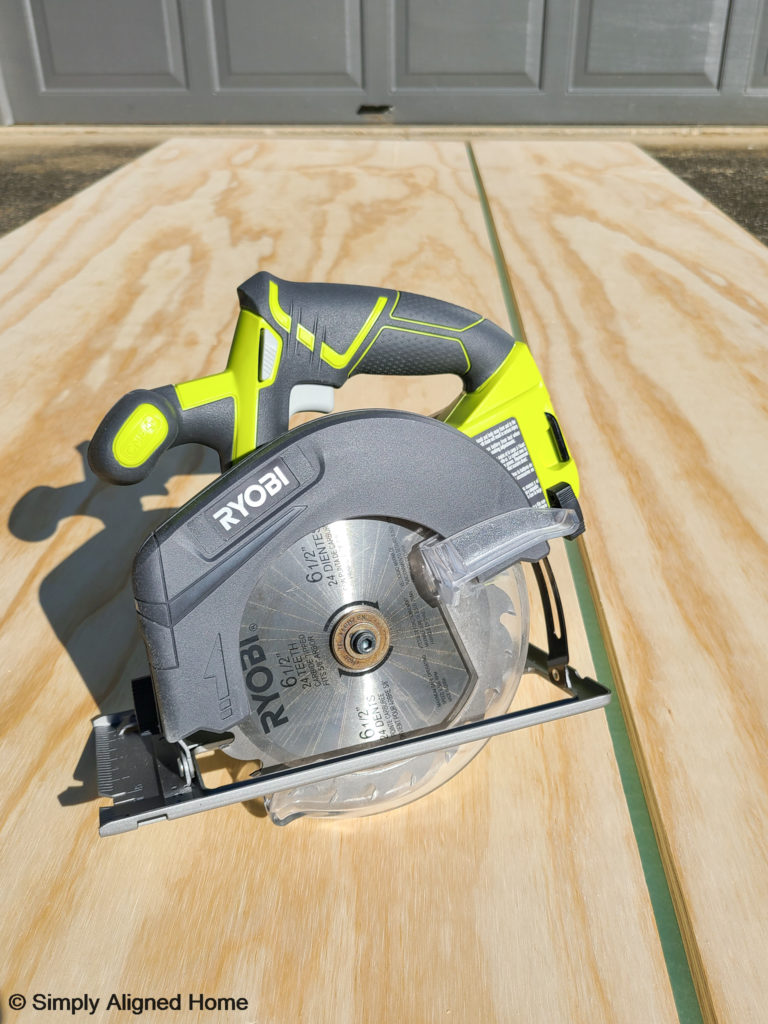
Pros
- Circular saws are generally lightweight and portable, making them easy to move around a workshop.
- Many circular saws allow for depth adjustment, allowing users to control the depth of the cut according to the thickness of the material.
- Circular saws are often more affordable, making them accessible to a wide range of users.
Cons
- Circular saws are not well-suited for intricate or detailed cuts, especially those involving curves.
- Improper use or binding of the blade can lead to kickback, a sudden and potentially dangerous reaction.
4. Table Saw
A table saw is a powerful woodworking tool consisting of a circular saw blade mounted on in the center of the table, driven by an electric motor. The blade protrudes through the surface of a flat table, creating a stable and precise platform for cutting wood.
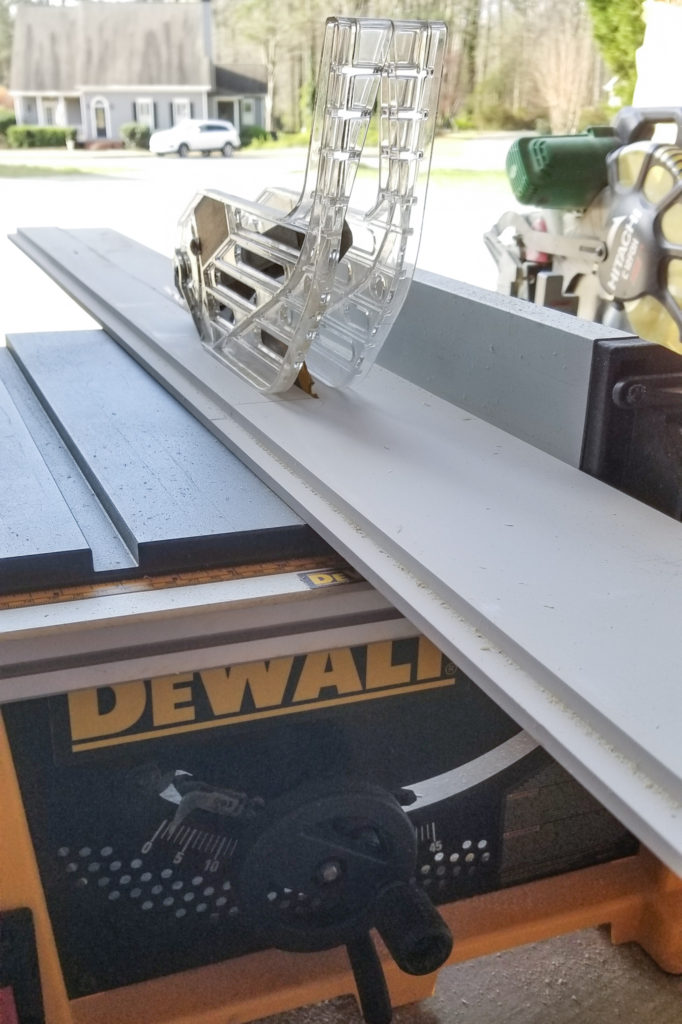
Pros
- Table saws are known for their ability to make accurate straight cuts.
- They are widely versatile in performing a wide range of cuts. Some are rip cuts, bevel cuts, crosscuts, and dado cuts.
- Most table saws come equipped with effective dust collection.
Cons
- High-quality table saws can be relatively expensive.
- Improper use or binding of the workpiece can lead to kickback.
5. Bandsaw
A bandsaw is a power saw consisting of a continuous band of toothed metal that is stretched between two or more wheels to cut material. This tool is commonly used in woodworking, metalworking, and various projects consisting of cutting curves, irregular shapes, and straight lines. The bandsaw’s versatility and precision make it a valuable addition to workshops.
Pros
- Bandsaws are highly versatile and can cut a wide range of materials, including wood, metal, plastic, and more, depending on the type of blade used.
- Bandsaws generally produce smoother cuts, requiring less sanding.
- Bandsaws tend to be quieter and create less dust compared to some other power saws.
Cons
- Larger bandsaws, especially those with substantial cutting capacity, are not easily portable. Smaller benchtop models are more portable but not ideal to move around.
- Changing the blade on a bandsaw can be more involved than other saws.
- Cost wise bandsaws are relatively expensive.
Those are the 5 essential saws that can be used for woodworking. I hope this list helped you decided what you need in your workshop. If you’re curious to know what my top 10 tools that I personally own and love are you can read about that HERE! Happy Building!
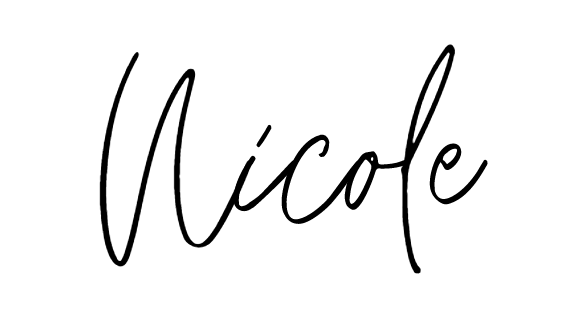
**Note: I am not a professional and do not claim to be an expert. Please be sure to always read instructions for all tools and products. Safety is very important and should be your top priority. Wear necessary protection when using tools (eye wear, hearing protection, gloves, etc.) and dust masks when sanding or cutting. Simply Aligned Home is not responsible for any injury or damage. All of my designs are not professionally designed and are for private use only.**
Tools Used
